
Over the past 40 years, Nintendo has been actively experimenting with mobile gaming, trying out a variety of concepts and generating new trends that other game console makers have followed. During this time, the company has created many portable gaming systems, among which there were practically no frankly unsuccessful ones. The quintessence of Nintendo's years of research was supposed to be the Nintendo Switch, but something went wrong: the one-of-a-kind hybrid game console turned out to be surprisingly crude and downright unfinished in many ways.
40 years in mobile gaming: a retrospective of Nintendo handheld consoles
If the Nintendo Switch were the first handheld console created by a Japanese company, many problems could be overlooked. After all, everyone has the right to make mistakes, especially when invading previously uncharted areas. But the catch is that Nintendo has been developing successful, high-quality handheld gaming systems for 40 years now, and in that light, walking the same rake looks at least strange. However, let's not get ahead of ourselves. First, let's take a look at how the Japanese company began its journey in the field of mobile gaming and what Nintendo has achieved over the years.
Game & Watch, 1980
The first portable Nintendo console was released in 1980. The device that Gunpei Yokoi invented was called Game & Watch and in a sense was a pocket version of the Color TV-Game home system. The principle is the same: one device, one game, and no replacement cartridges. A total of 60 models were released with various games, including "Donkey Kong" and "Zelda".
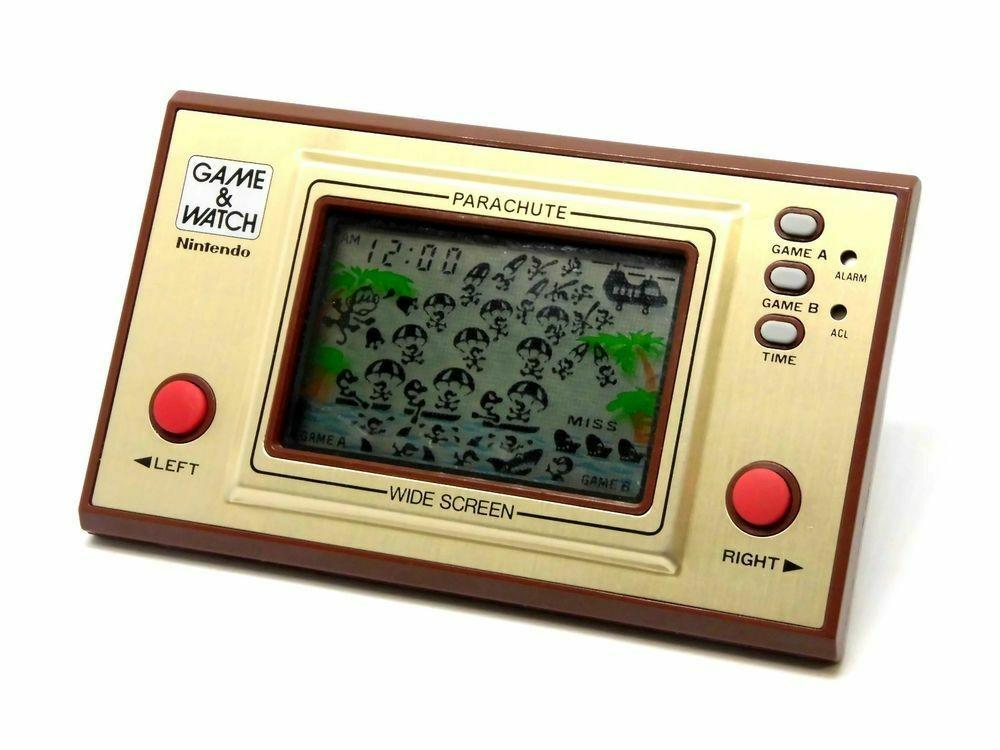
Although the Game & Watch consoles were not officially supplied in the USSR, the inhabitants of the post-Soviet space are familiar with these devices thanks to the clones called "Electronics". Thus, the Nintendo EG-26 Egg turned into "Just You Wait!"
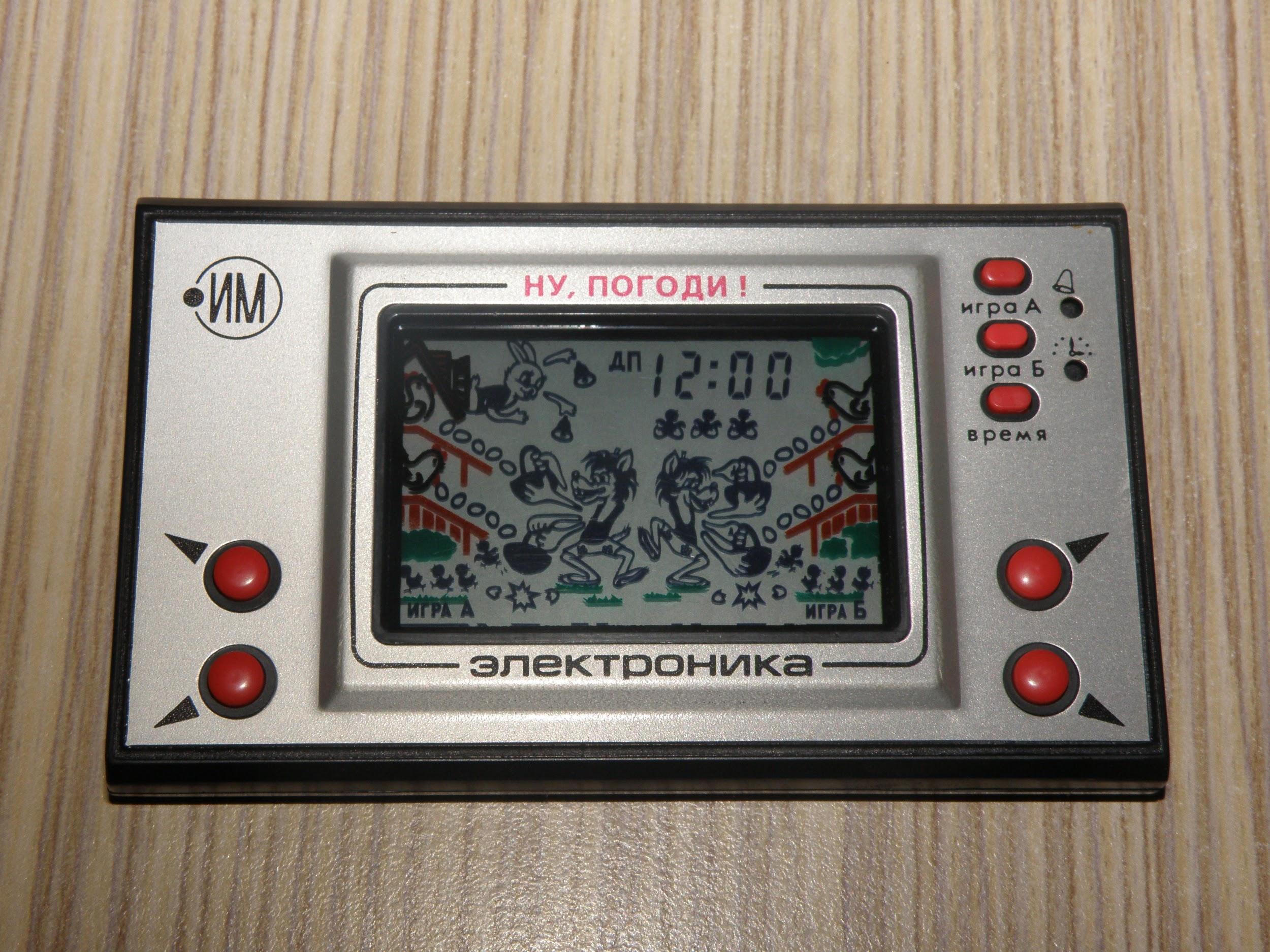
The same "wolf with eggs" from our childhood
Game Boy, 1989
The logical development of the Game & Watch ideas was the Game Boy portable console, on the creation of which the same Gunpei Yokoi worked. The main feature of the new device was replaceable cartridges, and among the best-selling games on the platform, in addition to the expected Mario and Pokémon, was the popularly beloved Tetris.

The Game Boy got a monochrome display with a resolution of 160 x 144 pixels, boasted a 4-channel audio system and supported the GameLink function, allowing you to connect two devices with a cable and play local multiplayer with a friend.
In the following years, Nintendo released two more modifications of the handheld console. The first of these, Game Boy Pocket, was released in 1996. The updated version of the console turned out to be 30% more compact than its predecessor, and besides, it was also lighter due to the fact that now the device was powered by 2 AAA batteries, while the original used 4 AA-cells (however, because of this, the battery life console was reduced from 30 to 10 hours). In addition, the Game Boy Pocket got a larger display, although its resolution remained the same. Otherwise, the updated console was completely identical to the original.
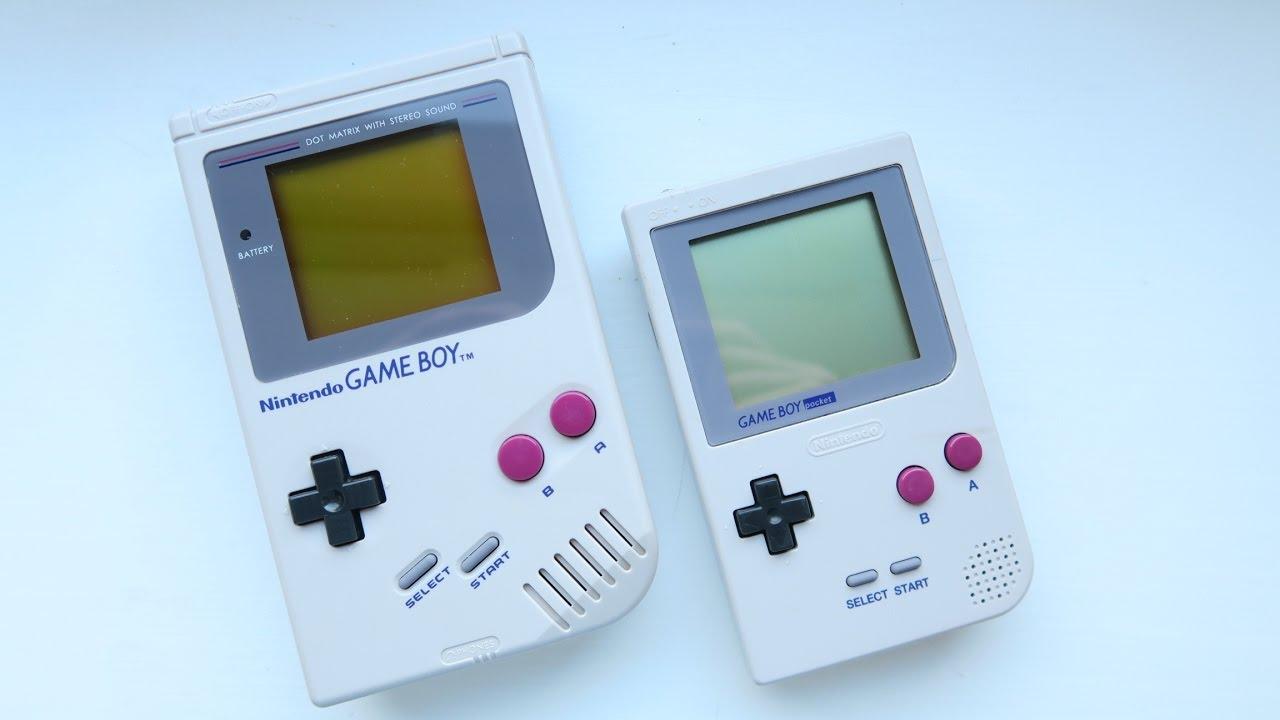
Game Boy and Game Boy Pocket Comparison
Later, in 1998, the Game Boy Light was added to the Nintendo handheld lineup with an integrated backlight. The hardware platform remained unchanged again, but the corporation's engineers were able to achieve a significant reduction in power consumption: 2 AA batteries were used to power the pocket console, the charge of which was enough for almost a day of continuous games with the backlight off or for 12 hours with it on. Unfortunately, the Game Boy Light remains exclusive to the Japanese market. This was largely due to the imminent release of the Game Boy Color: Nintendo simply did not want to spend money on promoting the previous generation console in other countries, because it could no longer compete with the new product.

Game Boy Light with lights on
Game Boy Color, 1998
The Game Boy Color was doomed to success, becoming the first handheld console to feature a color LCD display capable of displaying up to 32,000 colors. The filling of the device also underwent significant changes: the heart of the GBC was the Z80 processor with a frequency of 8 MHz, the amount of RAM increased by 4 times (32 KB against 8 KB), and video memory - 2 times (16 KB against 8 KB). At the same time, the screen resolution and the form factor of the device itself remained the same.

And Game Boy Color was also available in 8 colors.
During the existence of the system, 700 various games in various genres were released for it, and even a special version of "Alone in the Dark: The New Nightmare" was among the "guest stars". Alas, one of the most beautiful games released for the first PlayStation looked disgusting on the Game Boy Color and was generally "unplayable."
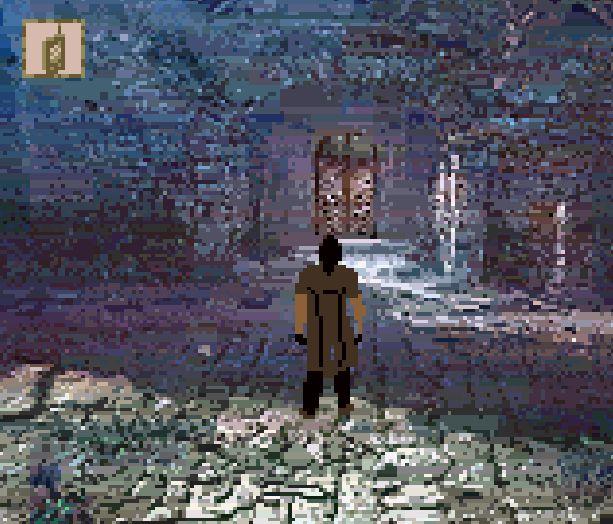
Alone in the Dark: The New Nightmare for Game Boy Color - Pixel Art We Didn't Deserve
Interestingly, the Game Boy Color was backward compatible with the previous generation of handheld consoles, allowing you to run any game on the original Game Boy.
Game Boy Advance, 2001
Released 3 years later, the Game Boy Advance was already much more reminiscent of the modern Switch: the screen was now in the middle, and the controls were spread out along the sides of the case. Given the diminutive dimensions of the console, this design is more ergonomic than the original design.
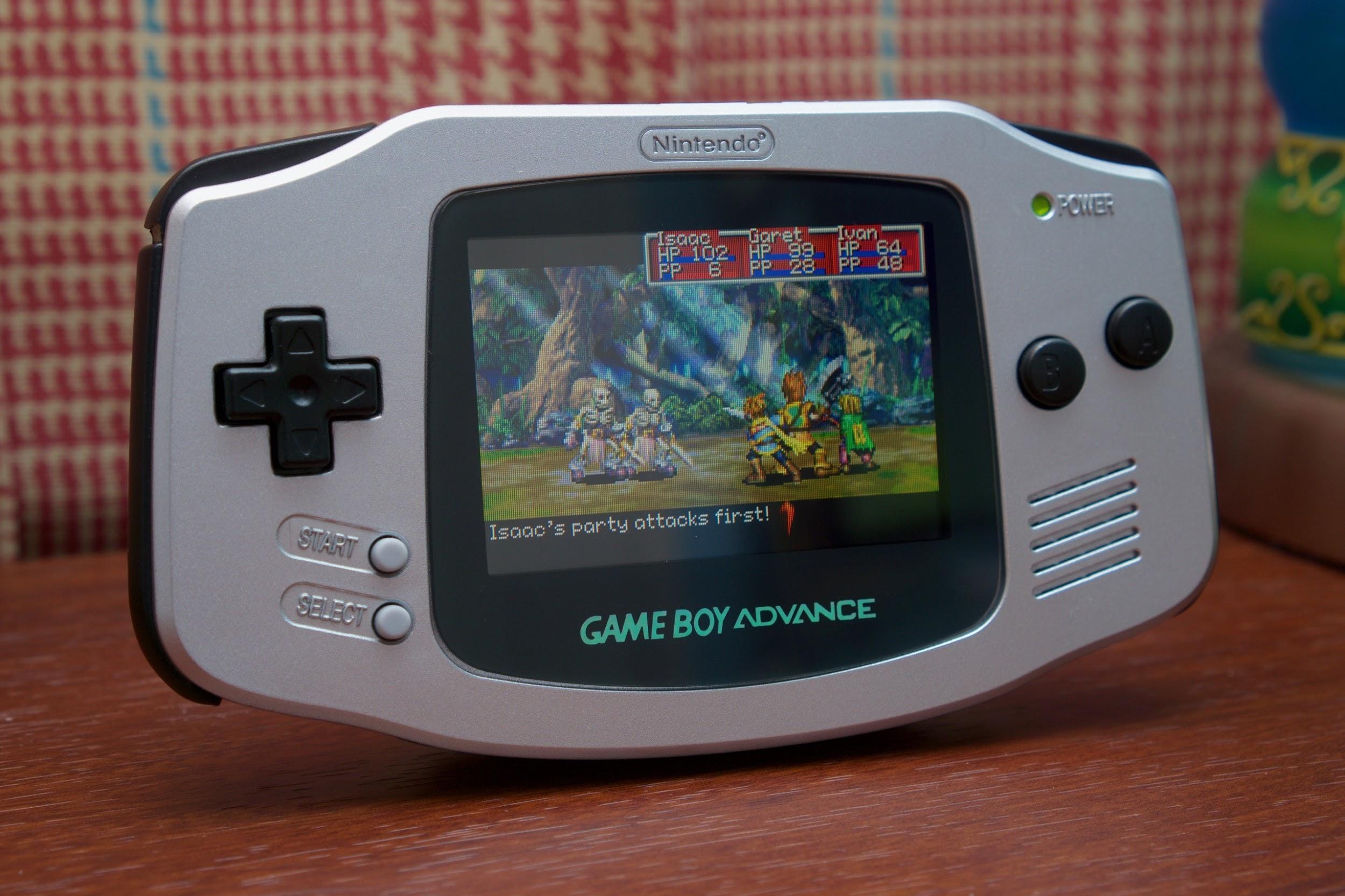
The updated platform is based on a 32-bit ARM7 TDMI processor with a clock frequency of 16.78 MHz (although there was also a version running on the old Z80), the amount of built-in RAM remained the same (32 KB), but support for external RAM up to 256 KB appeared. while VRAM grew to an honest 96 KB, which allowed not only to increase the screen resolution to 240 × 160 pixels, but also to flirt with some kind of 3D.
As before, there were some special modifications. In 2003, Nintendo released the Game Boy Advance SP in a clamshell form factor with a built-in lithium-ion battery (the original was powered by two AA batteries in the old fashioned way). And in 2005, as part of the annual E3, an even smaller version of the handheld console was introduced, called the Game Boy Micro.

Game Boy Advance SP and Game Boy Micro
It was this baby that marked the end of the Game Boy era, becoming a complete commercial failure, which is no wonder: the Game Boy Micro was literally squeezed in the claws between Advance SP and really breakthrough when the Nintendo DS appeared. In addition, the Game Boy Micro was an order of magnitude worse than the Advance SP in terms of functionality: the console lost support for games from the previous generation of Game Boy and the ability to play multiplayer using a Link cable - there was simply no room for a connector on the miniature case. However, this does not mean that the console was bad: when creating it, Nintendo simply relied on a rather narrow target audience, ready to make any sacrifices in order to be able to play their favorite games wherever and whenever they want.
Nintendo DS, 2004
The Nintendo DS was a real hit: while the Game Boy consoles sold 118 million units, the total sales of various DS modifications exceeded 154 million units. The reasons for such a resounding success lie on the surface.

Original Nintendo DS
First, at the time, the Nintendo DS was really powerful: a 67 MHz ARM946E-S processor and a 33 MHz ARM7TDMI coprocessor, combined with 4 MB of RAM and 656 KB of video memory with an additional 512 KB buffer for textures helped to achieve an excellent picture and provide full support for 3D graphics. Secondly, the console received 2 screens, one of which was touchscreen and was used as an additional control element, which helped to implement many unique gameplay features. Finally, thirdly, the console supported local multiplayer over WiFi, which allowed you to play with friends without lags and delays. Well, as a bonus, there was an opportunity to run games from the Game Boy Advance, for which there was a separate slot for cartridges. In short, not a console, but a real dream.
After 2 years, the Nintendo DS Lite was released. Despite the name, it was by no means a stripped down version of the handheld console. The battery capacity in the new revision has increased to 1000 mAh (versus 850 mAh previously), and microchips made according to a thinner process technology have become much more economical, which made it possible to achieve an impressive 19 hours of battery life at a minimum level of screen brightness. Among the changes are also better LCD displays that provide better color reproduction, a 21% reduction in weight (up to 218g), a more compact size and an expansion of the secondary port functionality, which now supported a variety of accessories like a dedicated controller for playing Guitar Hero.

Nintendo DS Lite
The Nintendo DSi was released in 2008. This console turned out to be about 12% thinner than its predecessor, received 256 MB of internal memory and a slot for SDHC cards, and also acquired a pair of VGA cameras (0.3 megapixels), which could be used to create funny avatars in the proprietary photo editor, as well as in some games. At the same time, the device lost the GBA connector, and with it, the support for launching games with the Game Boy Advance.
The last in this generation of portable consoles was the 2010 Nintendo DSi XL. Unlike its predecessor, it received only screens enlarged by an inch and an elongated stylus.
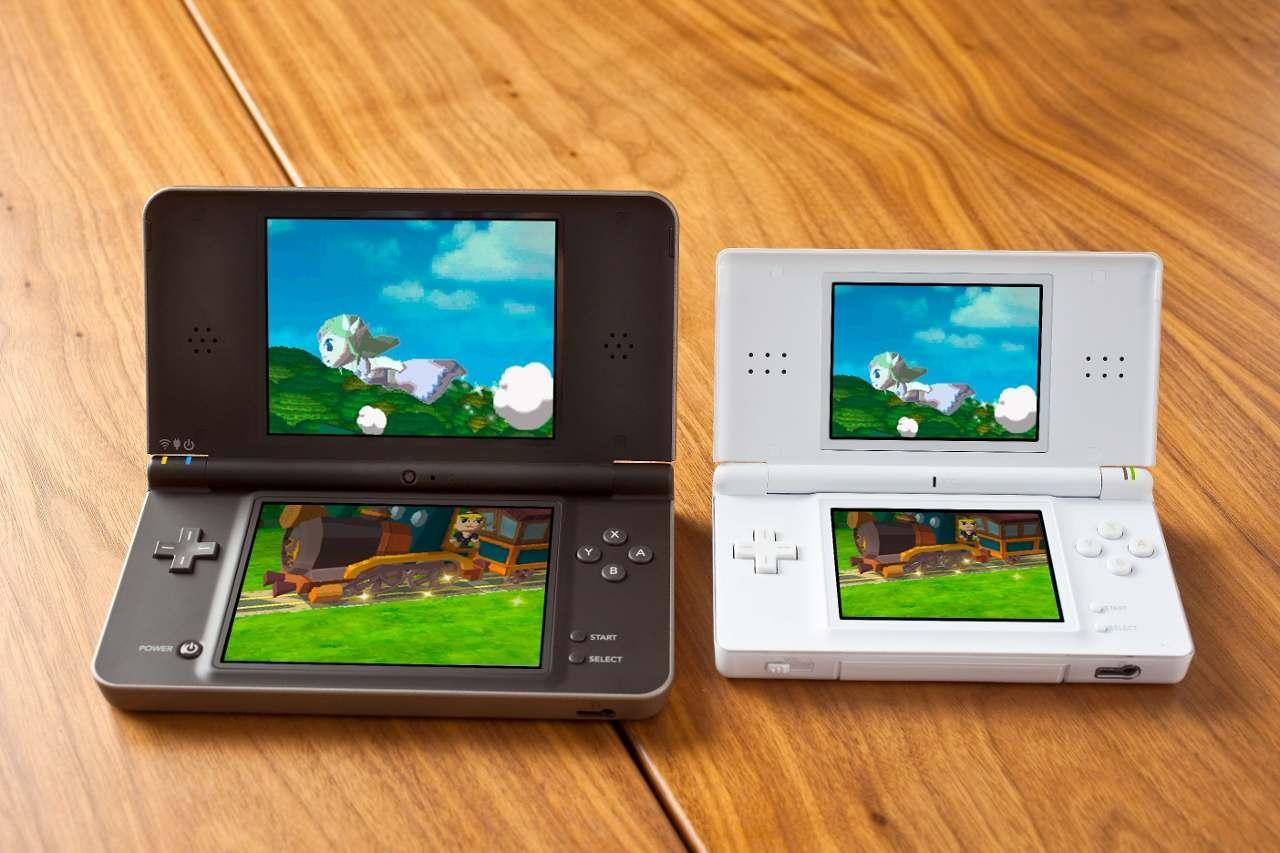
Nintendo DS Lite and Nintendo DSi XL
Nintendo 3DS, 2011
3DS has become an experiment in many ways: this console has added support for autostereoscopy, a technology for generating 3D images that does not require additional accessories like anaglyph glasses. To do this, the device was equipped with an LCD screen with a resolution of 800 × 240 pixels with a parallax barrier to create a three-dimensional image, a powerful dual-core 268 MHz ARM11 processor, 128 MB of RAM and a DMP PICA200 graphics accelerator with a performance of 4.8 GFLOPS.
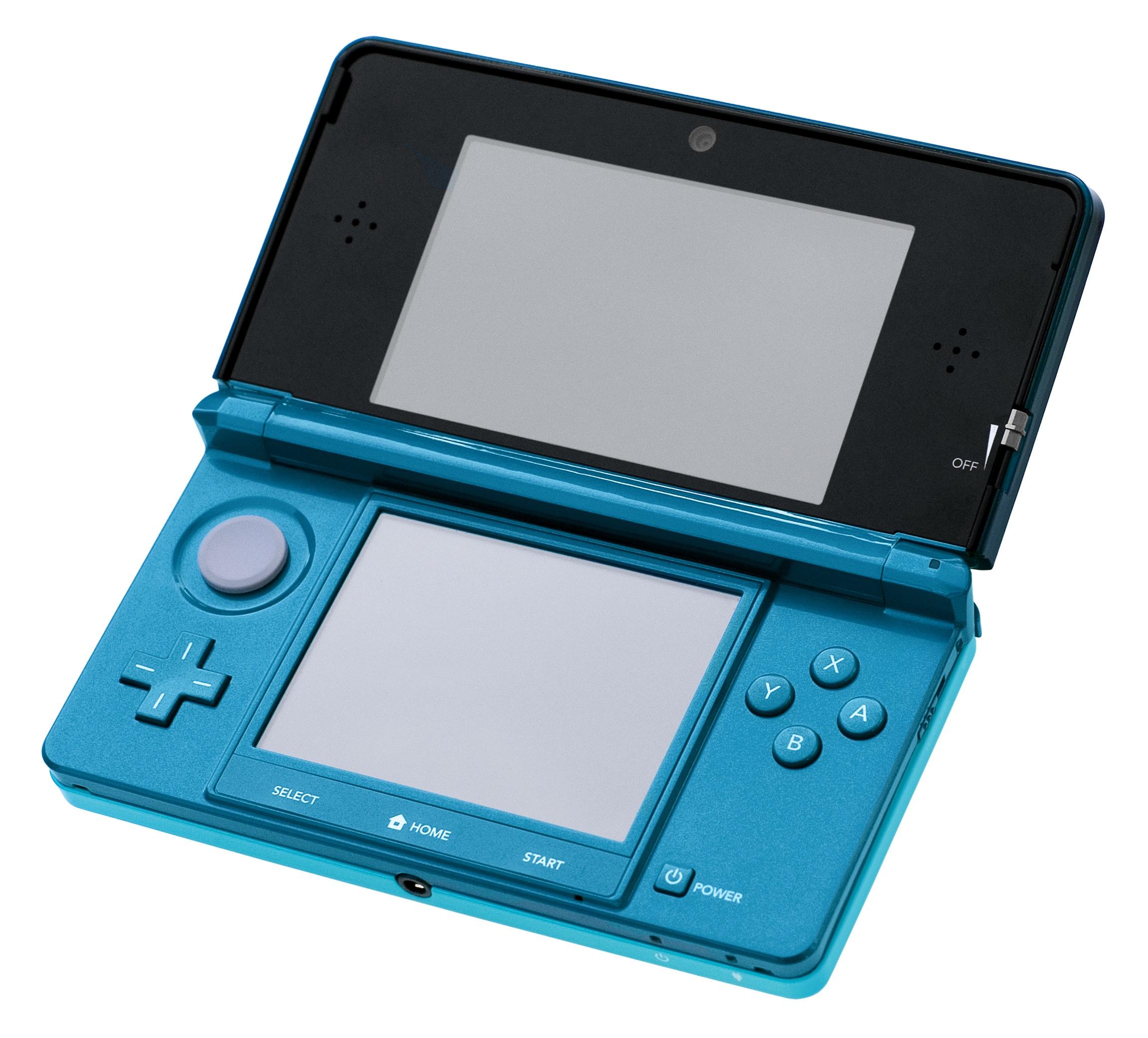
Original Nintendo 3DS
Traditionally, this portable console has acquired several revisions:
- Nintendo 3DS XL, 2012
Received updated screens: the diagonal of the top increased to 4.88 inches, while the bottom increased to 4.18 inches.
- Nintendo 2DS, 2013
The hardware part is completely identical to the original, with the only difference that instead of stereoscopic displays in the Nintendo 2DS, conventional two-dimensional ones are used. The very same console was made in monoblock form factor.
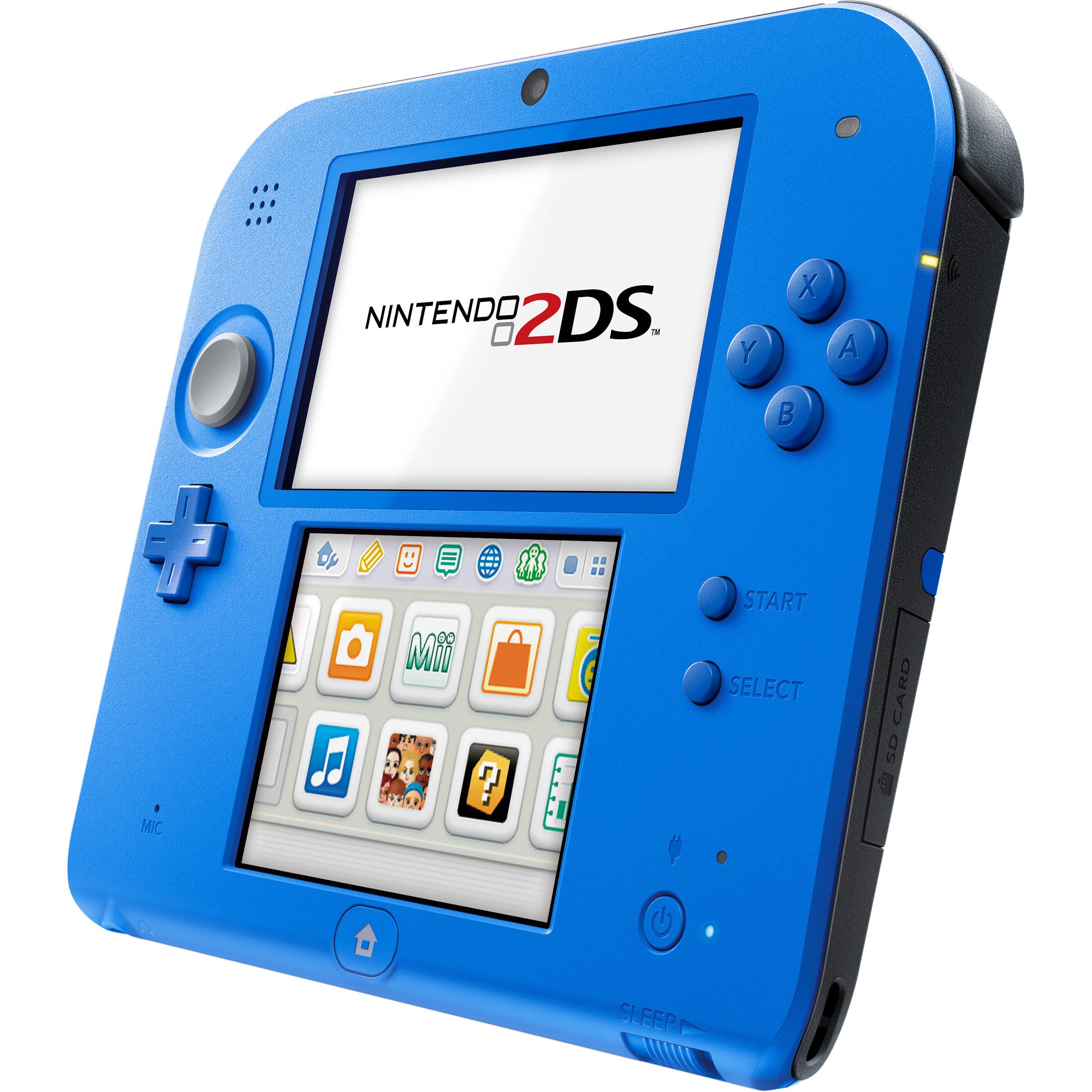
Nintendo 2DS
- New Nintendo 3DS and 3DS XL, 2015
Both consoles were announced and released to the market at the same time. The devices received a more powerful main processor (ARM11 MPCore 4x) and coprocessor (VFPv2 Co-Processor x4), as well as twice the amount of RAM. The front camera now tracked the player's head position for improved 3D rendering. Improvements have also been made to the controls: a miniature C-Stick analog stick appeared on the right, and the ZL / ZR triggers appeared on the ends. The XL version featured a larger screen.
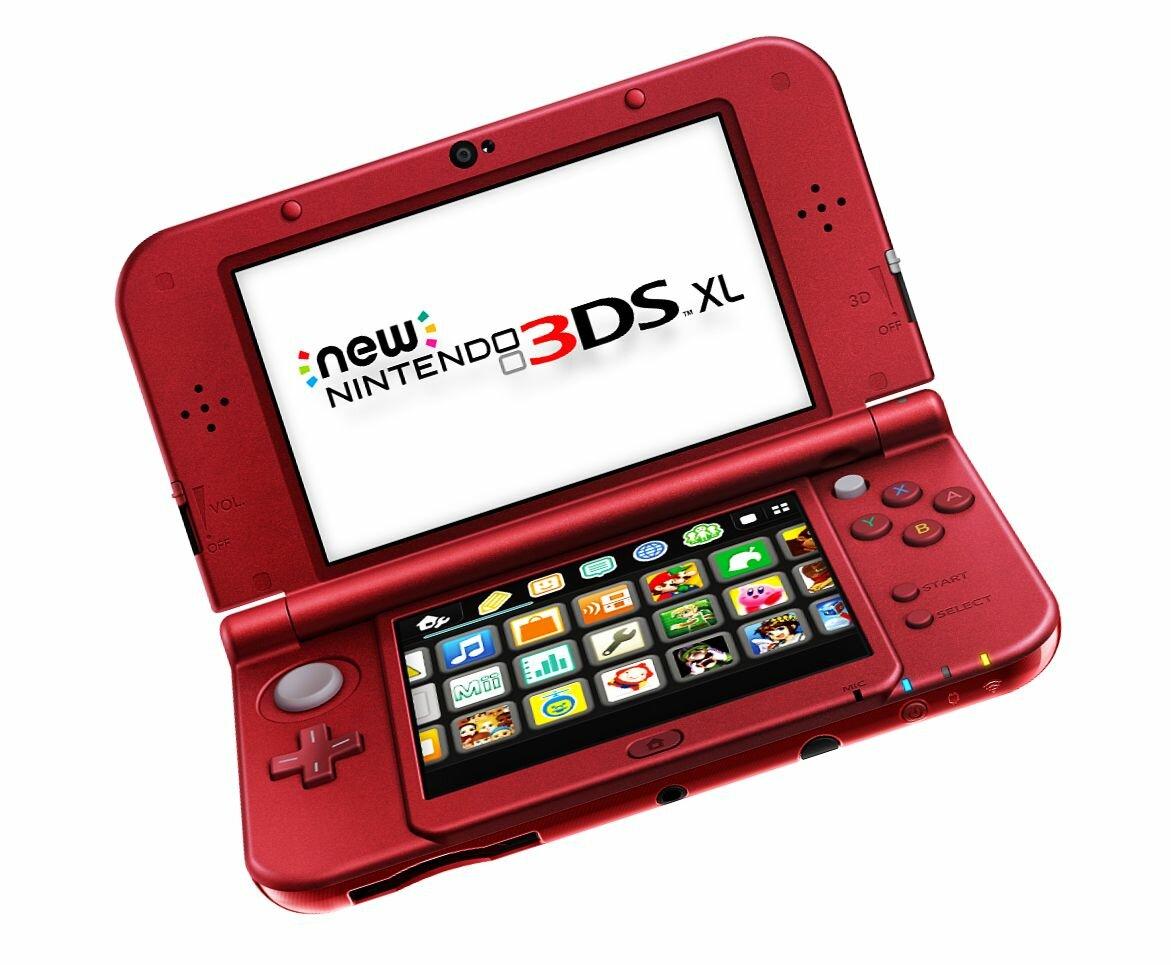
- New Nintendo 2DS XL, 2017
The new revision of the console returned to the original clamshell form factor and, like the 3DS XL, acquired larger displays.
Nintendo Switch: What Went Wrong?

In 2017, the Nintendo Switch hybrid console hit the shelves of electronics stores, combining the advantages of stationary and mobile gaming systems. And the first feeling that arises after a close acquaintance with this device is an extreme degree of bewilderment.
Do you know what the above portable consoles have in common? All of them were quite high-quality, solid products. Of course, there are no ideal devices: the same 3DS was remembered by many thanks to the “black screen of death” caused by a software error in the first version of the firmware. And the very appearance of several editions of the same console with numerous improvements eloquently reminds us: it is impossible to foresee everything, especially as a pioneer in the market.
At the same time, some Nintendo decisions were very controversial (take the same cameras from DSi, which were used only in a limited number of projects), and some console modifications were frankly unsuccessful. Here we can cite the example of the Game Boy Micro, which was compact in size, but otherwise inferior to its older brothers. But in the case of the Game Boy, you had a choice of three models, and in general, each of the devices was made at a fairly high level. In other words, in the old days Nintendo either made an excellent device out of a good one, or conducted experiments that did not affect the end user. With the Nintendo Switch, the situation is somewhat different.
The first revision of the console may not have any fatal flaws, but ... it is bad in general. Many shortcomings of varying degrees of significance give its owners a lot of inconvenience, and the problems are so obvious that one can only wonder why the engineers of one of the most successful corporations in the field of digital entertainment even allowed them to appear, especially given Nintendo's rich experience in the development of gaming platforms in general and mobile devices in particular? It is no coincidence that in 2019, the 60 Millions de Consommateurs magazine, published by the National Institute of Consumption of France, presented Nintendo with Cactus (an analogue of the Golden Raspberry from the world of consumer electronics) as the creator of one of the most fragile devices .

Honorable Cactus to Nintendo Garden
And there is no doubt about the objectivity of this award. Suffice it to recall at least the story with the left joycon, which often lost touch with the console. The source of the trouble was an unnecessarily small antenna, which physically could not receive a signal when the player moved too far from the console. Moreover, there were no objective reasons for such miniaturization at all. There is quite enough space inside the controller case, which was used by the most handy gamers: copper wire and a soldering iron made it possible to achieve stable synchronization in a couple of minutes. And in the photo below you can see, so to speak, a proprietary solution to the problem from the official Nintendo service center: a gasket made of conductive material was simply glued to the antenna. Why something like this could not be done immediately remains a mystery.

Another problem turned out to be a backlash in the place where the controllers were attached to the case, and over time, the joycons got loose to such an extent that they spontaneously flew out of the slots. Again, it was solved very simply: it was enough just to bend the metal guides. However, this will not help when (not if, but when) the plastic latches on the manipulators themselves still break. Here you can recall the backlash of the 3DS screen, but, firstly, such a problem occurs in many clamshell devices in principle, and secondly, its scale is somewhat different: if in the case of 3DS this practically does not affect the user experience, then when comes to Nintendo Switch, you have every chance of breaking the console when it suddenly undoes from the joycon.
Many players also complain about too slippery and uncomfortable "fungi", which makes the game very problematic in a stuffy room or transport. This is where AliExpress comes to the rescue, ready to offer rubber or silicone pads for every taste. But the very need for an independent "upgrade" of the console looks depressing.

The situation with analog stick drift is difficult to describe otherwise than outrageous. Switch owners noticed that some time after the start of operation, the controller begins to record the deviation of the sticks from the vertical axis at rest. For some, the problem manifested itself after a couple of tens of hours of play, for others only after a few hundred, but the fact remains: there is a shortage. However, it is not caused by careless handling of the device. Due to the peculiarity of the design of the joycons, dirt constantly gets inside the modules (that is, controllers for a portable console, which, in principle, get dirty more often, are much less protected than gamepads for home use), and it is the contamination of the contacts that leads to their "sticking". The solution is elementary: disassembling and cleaning the module.

In some cases, you can do with pouring liquid to clean the contacts under the stick.
And everything would be fine if Nintendo immediately admitted its own mistake, agreeing to free repair or replacement of defective manipulators under warranty. However, the company has long denied that there was a drift problem, suggesting that users re-calibrate their joycon or charging $ 45 for repairs. It was only after a class action lawsuit filed by the American law firm Chimicles, Schwartz Kriner & Donaldson-Smith on behalf of affected buyers that Nintendo began to replace the drifting joykons as part of its warranty, and Shuntaro Furukawa, president of the corporation, apologized to everyone who faced the problem.
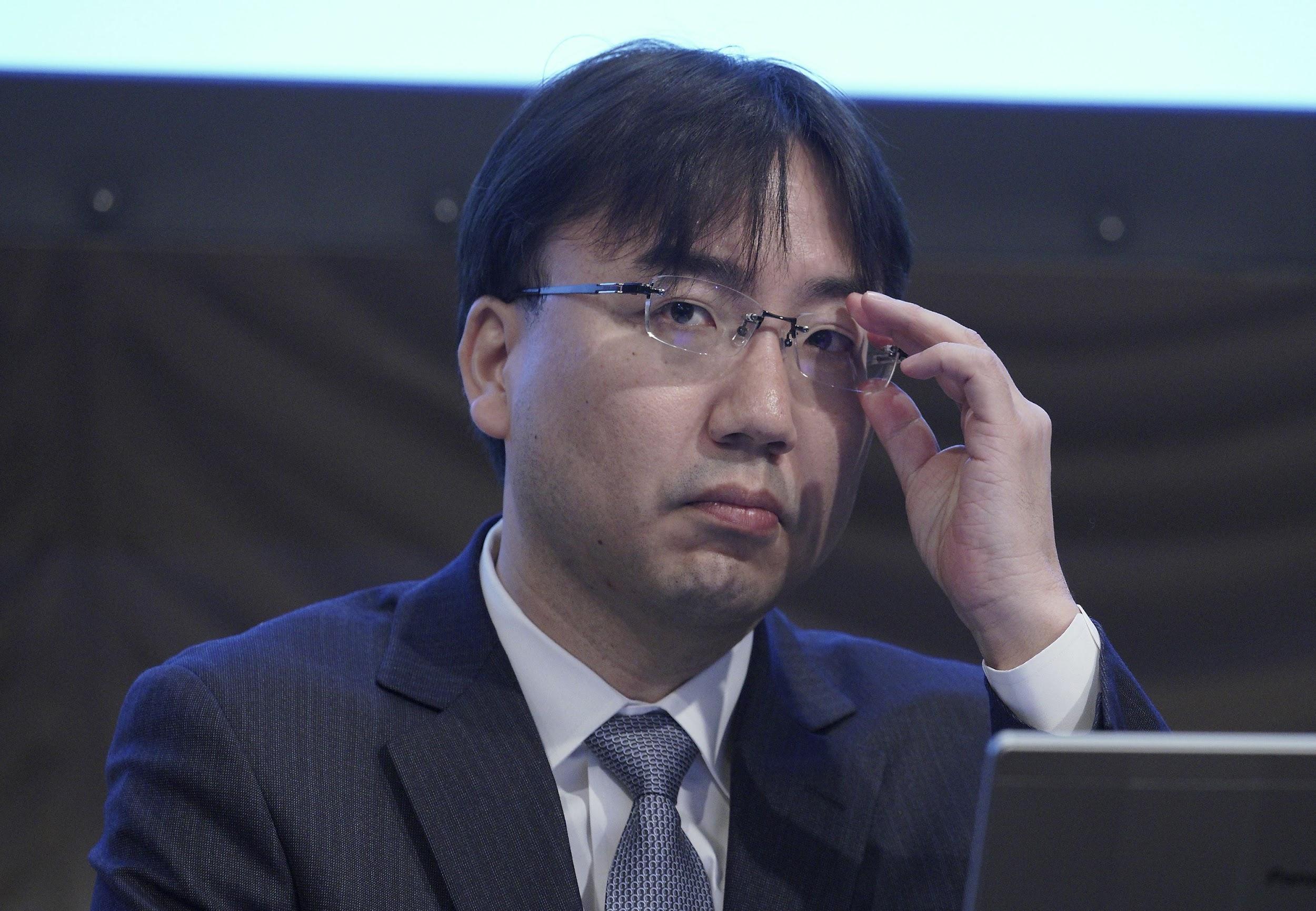
Shuntaro Furukawa, President of Nintendo
This only made little difference. First, the new joycon replacement policy has come into effect in a limited number of countries. Secondly, you can use this right only once, and if the drift reappears, you will have to repair (or change) the device at your own expense. Finally, thirdly, no work on the errors was ever done: the Nintendo Switch Lite released in 2019, as well as the new revision of the main console, has exactly the same problems with analog sticks. The only difference is that in the case of the portable version, the controllers are built directly into the case and there can be no question of replacing them, and for cleaning you will have to disassemble the entire console.
But that's not all. While "spaceships roam the Bolshoi Theater" and noname smartphones sport Gorilla Glass, the Nintendo Switch model gets a plastic screen that collects scratches not only on the road, but even when docked. The latter, by the way, is devoid of silicone guides that could protect the display from damage, so you can't do without buying a protective film.
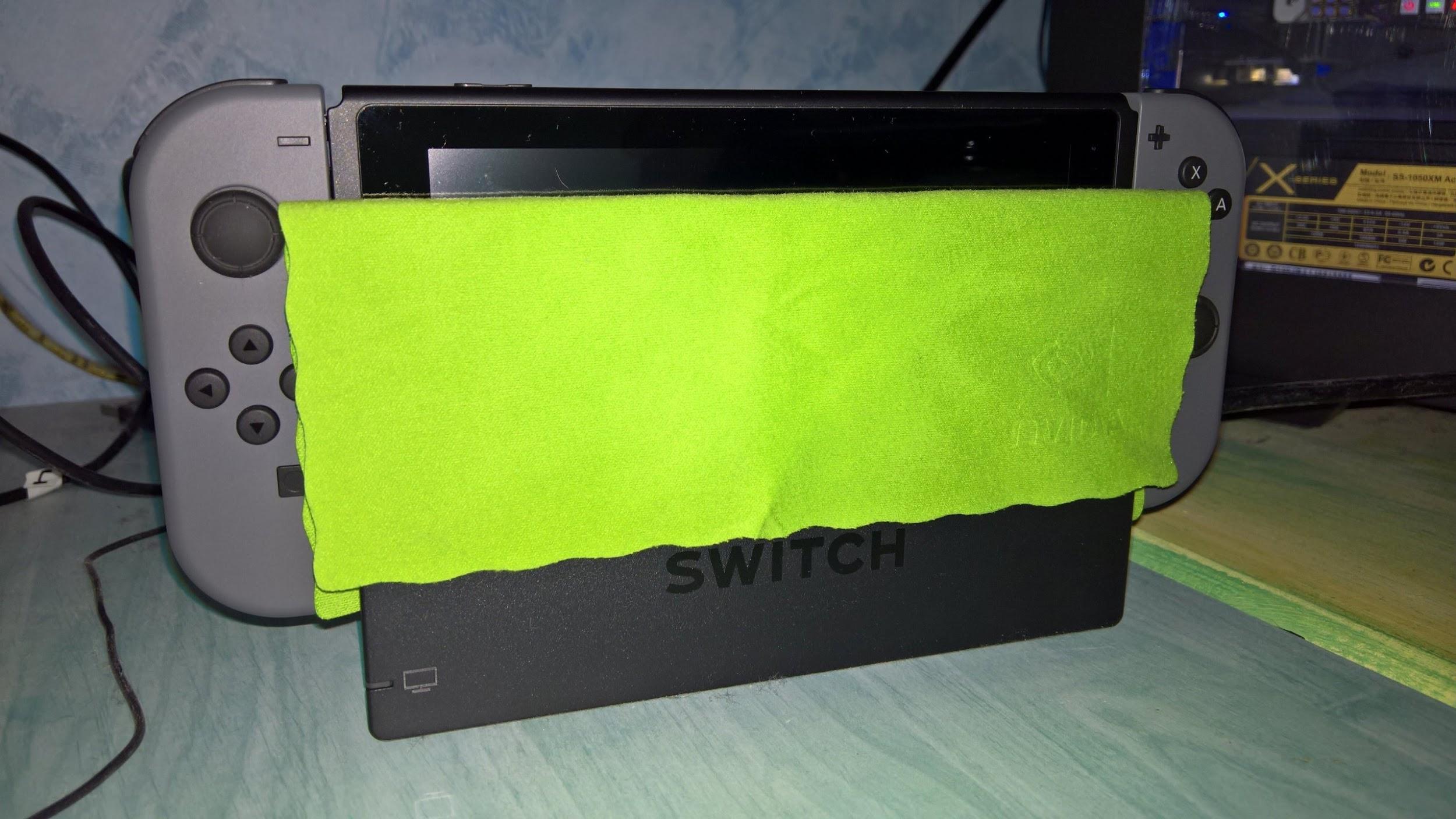
Budget Docking Tuning Keeps Your Nintendo Switch Screen From Scratching
Another issue concerns connecting wireless headphones to Nintendo Switch. This is simply not possible. The console is equipped with a 3.5mm minijack, for which the Japanese should be thanked, but the device does not support Bluetooth headsets. The reasons are again unclear: the set-top box itself has a transceiver, and it could be used at least in portable mode, when the joycons "communicate" with the set-top box via wires, which would be logical and very convenient. In the meantime, you have to use third-party USB adapters, since the set-top box is equipped with USB Type-C with USB Audio support.
By the way, if you are used to chatting with friends on the other side of the screen by voice without any additional devices, as it is implemented on the PlayStation 4, then we hasten to disappoint. Formally, this function is present, but to use it, you have to download the proprietary Nintendo application to your smartphone. Yes, that's right: the portable gaming platform offers you voice chat from a third-party device instead of talking to your teammates through a headset connected to the console.
Also, many players complain about online problems, blaming a low-quality WiFi module. Here, of course, one can speculate about the technical literacy of the average user and routers for 500 rubles, if only Masahiro Sakurai himself, responsible for the development of Super Smash Bros., did not recommend players would like to purchase an external Ethernet adapter for network play (the console does not have a built-in LAN port), which seems to hint at Nintendo's awareness of the problem.

Masahiro Sakurai will not advise badly
If we take into account ergonomics, then there are minor flaws. Take the same rear leg: it is too thin and offset from the center of gravity of the console to the side, which makes the device unstable even on a flat surface. Try playing the train with your Nintendo Switch on a table and you will appreciate all the disadvantages of this solution. Although, it would seem that it could be simpler: just widen the support a little, move it to the middle of the body - and the problem will be solved.
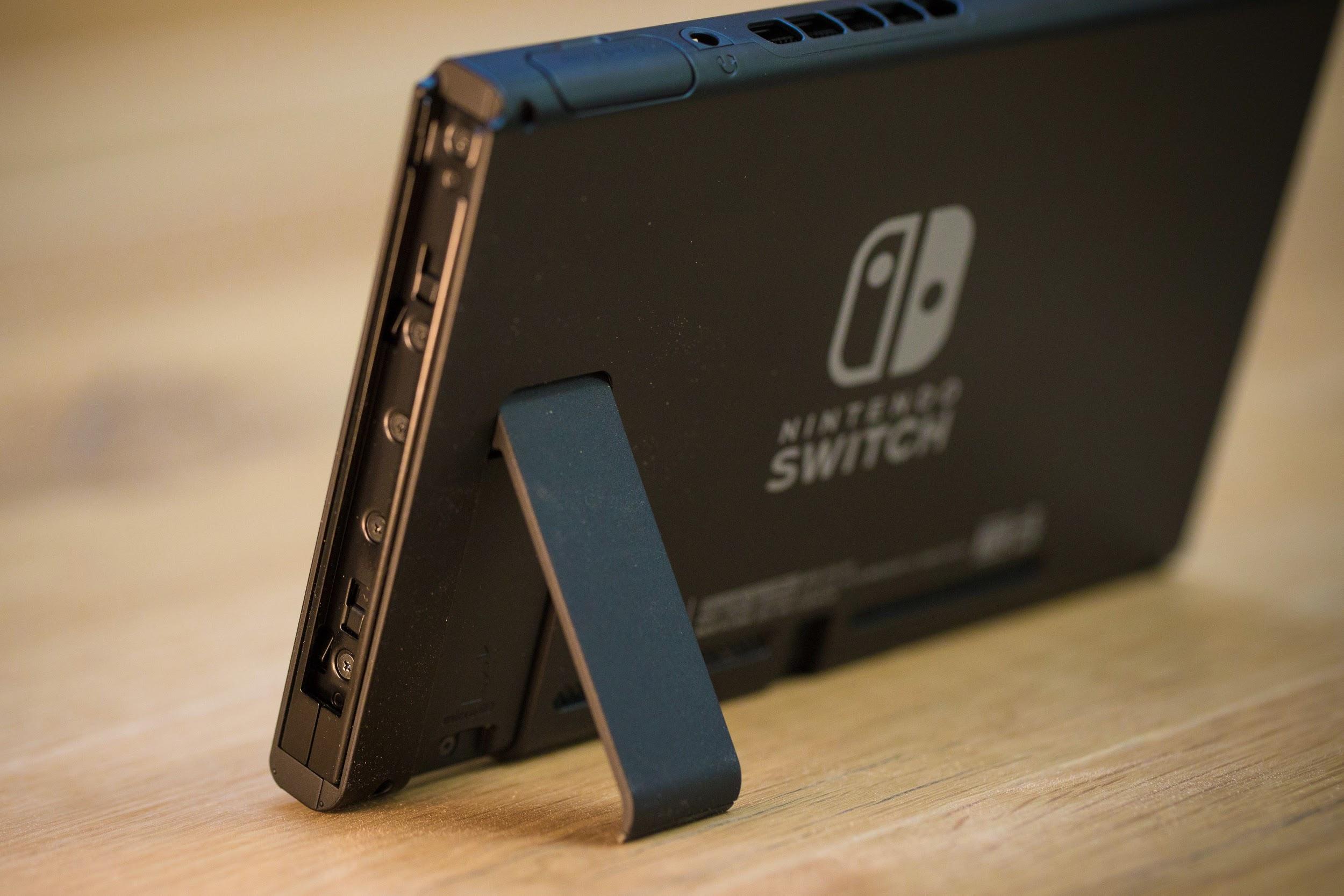
Although the leg copes with the role of the cover of the memory card compartment perfectly
But what about the "stuffing" of the Nintendo Switch? Alas, everything is not quite smooth here either. Anyway, it was up until last year when big N released an updated revision of the console. Let's take a quick look at the original versus the updated version and see what has changed.
Nintendo Switch 2019: What's New?
Let's not beat around the bush: we bring to your attention a table that clearly demonstrates the difference between the 2017 Nintendo Switch and the new 2019 version.
Revision |
Nintendo Switch 2017 |
Nintendo Switch 2019 |
SoC |
NVIDIA Tegra X1, 20 nm, 256 GPU cores, NVIDIA Maxwell |
NVIDIA Tegra X1, 16 nm , 256 GPU cores, NVIDIA Maxwell |
RAM |
4 GB Samsung LPDDR4 3200 Mbps 1.12 V |
4 GB Samsung LPDDR4X 4266 Mbps 0.65V |
Built-in memory |
32 GB |
|
Display |
IPS, 6.2``, 1280 × 720 |
IPS IGZO , 6,2``, 1280 × 720 |
Battery |
4310 mAh |
|
There are not so many innovations, but if the first revision of the Nintendo Switch felt like a beta version, then, picking up the updated console, we can say that we finally waited for the release. What has changed for the better?
Objectively, if we are dealing with a hybrid console, compromises are inevitable and one should not expect any impressive results from such a device. But the catch is that at the start of sales, even the main feature of the Nintendo Switch, mobility, practically did not work. The console's battery life was about 2.5 hours for a large project like Legend of Zelda: Breath of the Wild, or just over 3 hours for a 2D indie game, which is not seriously. How frivolous and lugging PowerBank with you, especially if you have a long trip and you are already loaded with things.
In the updated version of the Nintendo Switch in 2019, this problem was solved, and in a rather original way: by replacing the 20-nanometer NVIDIA Tegra X1 SoC with a 16-nanometer one, as well as by switching to improved memory chips from Samsung. Since the second version of the system-on-a-chip consumes noticeably less power, and the new Samsung RAM turned out to be 40% more energy efficient, the battery life of the console has increased almost 2 times. At the same time, it was possible to avoid both an increase in the price of the device and an increase in its dimensions and weight, which would be inevitable if a more capacious battery was installed.
Console |
Nintendo Switch 2017 |
2019 Nintendo Switch |
Battery life, 50% display brightness |
3 hours 5 minutes |
5 hours 2 minutes |
Battery life, 100% display brightness |
2 hours 25 minutes |
4 hours 18.5 minutes |
|
46 °C |
46 °C |
|
48 °C |
46 °C |
|
54 °C |
50 °C |
The improved display from Sharp, made using IGZO technology, also makes its contribution, albeit not so significant. This abbreviation stands for Indium Gallium Zinc Oxide - "Oxide of indium, gallium and zinc". Pixels in such matrices do not require constant updating when displaying stationary objects (for example, a HUD or an eShop interface) and are less susceptible to interference from the electronic components of the screen, which further reduces energy consumption. In addition, the IGZO matrix transmits the light flux better, which helped to increase the brightness of the backlight, although in the case of the Nintendo Switch only slightly: 318 cd / m2 versus 291 cd / m2. Also, thanks to the improved matrix, it became much more comfortable to play in bright daylight (the original had problems even with this).
In terms of performance, there is also a change for the better. This is primarily noticeable in open-world games: in the same Legend of Zelda: Breath of the Wild, FPS drawdowns in complex scenes are no longer as monstrous as they were before - an increase in RAM bandwidth makes itself felt.

Interestingly, the difference in temperatures between the old and new versions is minimal, but at the same time, the 2019 console has become noticeably quieter: obviously, the fan speed has been deliberately reduced in favor of less noise and again energy saving. Considering the 50 ° C temperature on the heatsink under load, this decision is quite justified.
If we talk about controllers, the joycons received updated housings made of better quality plastic: of course, not a soft touch, but it became much more pleasant to hold them in your hands. The problem with the antenna of the left controller, as well as with the backlash of the mounts to the case, was resolved (although the latches remained plastic), but with the sticks everything is the same: the same design, the same risks of contamination and drift over time. So for playing at home it is still better to buy a Pro controller, especially since from the point of view of ergonomics it is much more convenient.
In light of all of the above, we strongly recommend everyone who is just going to join the wonderful world of Nintendo (and this is by no means sarcasm, because today the Japanese corporation is actually the last major platform holder to rely on gameplay and release GAMES, and not pretentious dummies , interactive cinema or rides for a couple of evenings), purchase exactly the latest Switch revision of the 2019 sample. It is very easy to distinguish the new version of the console from the previous one:
- The Nintendo Switch 2019 box has gone completely red.
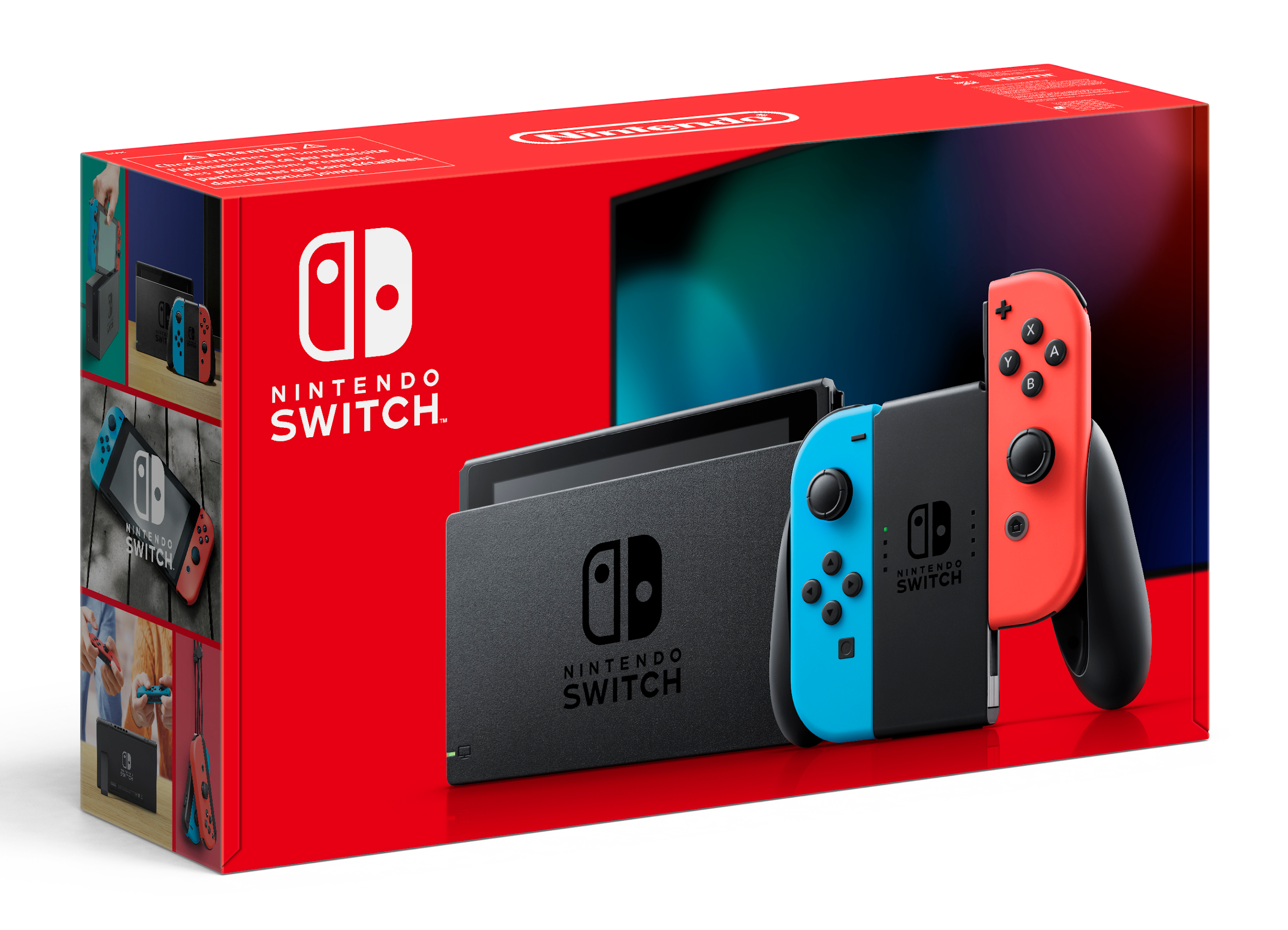
- The serial number at the bottom of the box must start with the letters XK (the original Switch has a serial number starting with XA).
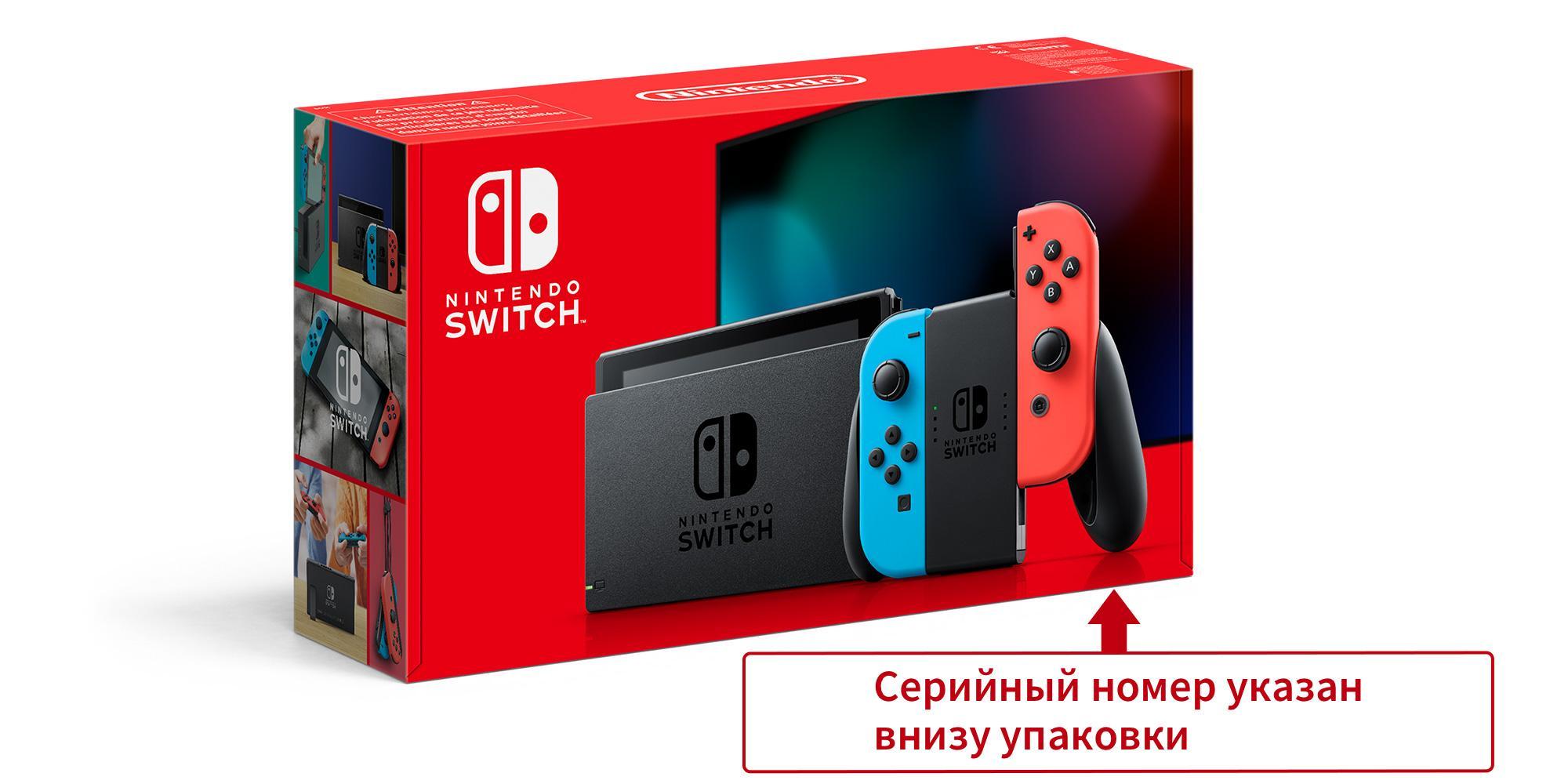
- The modification and year of manufacture of the device are also indicated on the console case: the device with the latest revision should say “ MOD. HAC-001 (01), MADE IN CHINA 2019, HAD-XXXXXX ", while the consoles of the first revision have" MOD. HAC-001, MADE IN CHINA 2016, HAC-XXXXXX ".

Something has become with my memory, I do not remember either Mario or Link ...
There is another problem that Nintendo fans never got around to solving: the extremely small amount of internal memory. The capacity of the Switch system storage is only 32 GB, of which only 25.4 gigabytes are available to the user (the rest is occupied by the console OS), while there are no "Premium" or "Pro Edition" that would carry at least 64 GB of memory on board, the Japanese giant does not offer. But how much do the games themselves weigh? Let's get a look.
A game |
Volume, GB |
Super mario odyssey |
5,7 |
Mario Kart 8 Deluxe |
7 |
New Super Mario Bros. U Deluxe |
2,5 |
Paper Mario: The Origami King |
6,6 |
Xenoblade Chronicles: Definitive Edition |
14 |
Animal Crossing: New Horizons |
7 |
Super Smash Bros. |
16,4 |
DRAGON QUEST XI S: Echoes of an Elusive Age — Definitive Edition |
14,3 |
The Legend of Zelda: Link’s Awakening |
6 |
The Legend of Zelda: Breath of the Wild |
14,8 |
Bayonetta |
8,5 |
Bayonetta 2 |
12,5 |
ASTRAL CHAIN |
10 |
Witcher 3: Wild Hunt |
28,7 |
Doom |
22,5 |
Wolfenstein II: The New Colossus |
22,5 |
The Elder Scrolls V: Skyrim |
14,9 |
L.A. Noire |
28,1 |
Assassin’s Creed: . (Assassin’s Creed IV: + Assassin’s Creed ) |
12,2 |
What do we have? Multi-platform projects naturally fit into the memory of the Nintendo Switch with a rattle, and some of them, like The Witcher and Noir, do not fit there at all. But even when it comes to exclusives, the picture is disappointing: you can download The Legend of Zelda: Breath of the Wild, Animal Crossing: New Horizons, New Super Mario Bros. U Deluxe ”and ... that's all. If you play mostly at home, such restrictions will bring a minimum of inconvenience, although preloading is out of the question: before downloading each new release, you will have to remove one or several already installed games, and then languish in anticipation of downloading the distribution from the eShop. By the way, you will also not be able to save memorable moments of your playthroughs, since there will simply be no space for the video.
If you are going on vacation or a business trip, and even to places where you have already heard something about WiFi, but have never used it, then ... it is better to immediately install 2-3 games, in which you are guaranteed to play more than a dozen (otherwise and several hundred) hours, such as Legend of Zelda or Animal Crossing. Of course, there is still an option to stock up on cartridges for future use, but, firstly, it is inconvenient, and secondly, it does not always help. In order to reduce the cost, the size of the cartridges is limited to 16 gigabytes, so, for example, you will not be able to play LA Noire without reloading the assets, in the case of DOOM you will only get a single-coil campaign, and by purchasing Bayonetta 1 + 2 Nintendo Switch Collection ”, you will only be able to play the sequel: instead of the cartridge with the first part inside the box, you will find only a sticker with the code for the eShop.
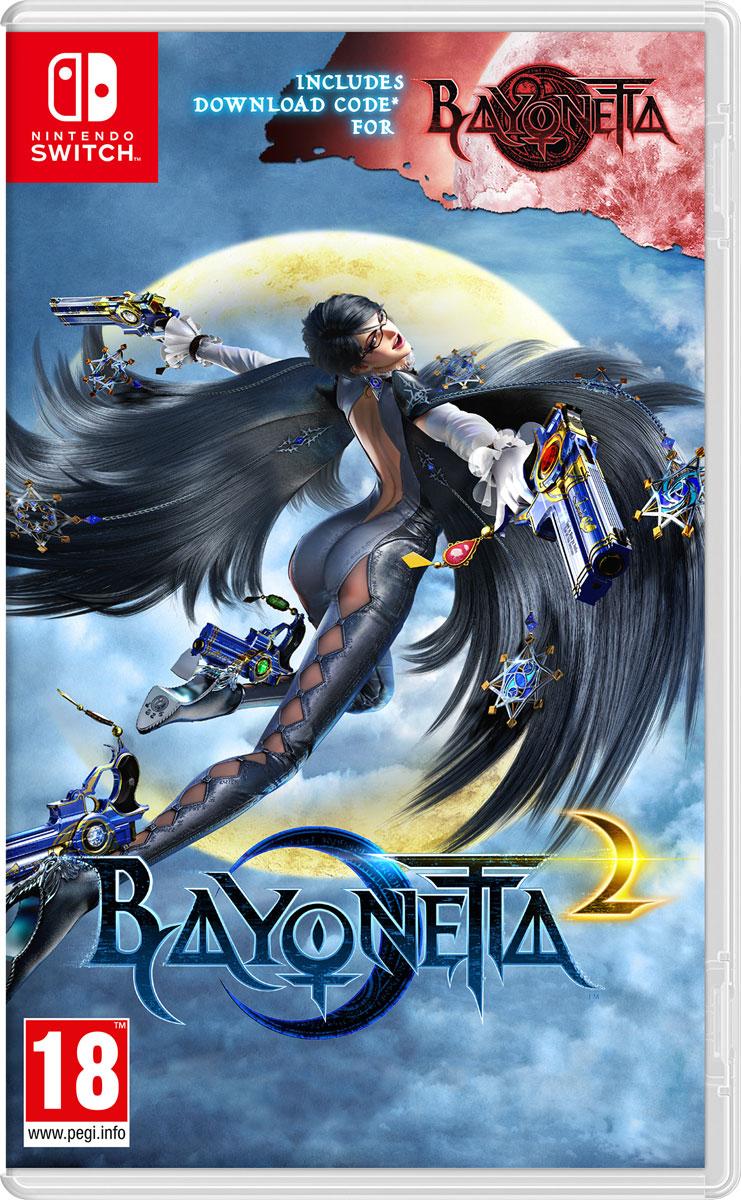
Special offer: one Bayonetta for the price of two
However, there is an alternative solution: to forget about the problems with lack of memory will help to buy a flash card SanDisk for Nintendo Switch. The memory cards in this series are licensed by Nintendo to ensure compatibility with the portable console and to meet the Japanese corporation's optimal gaming storage requirements.
The SanDisk for Nintendo Switch series includes three microSD card models: 64GB, 128GB and 256GB. Each of them corresponds to the speed characteristics of the SDXC standard: the performance of cards reaches 100 MB / s in sequential read operations and 90 MB / s (for models with 128 and 256 GB) - during sequential write, which ensures high speed of downloading and installing games, as well as Eliminates framerate drops in open world games when streaming textures.

In addition to high performance, SanDisk for Nintendo Switch Memory Cards boast excellent environmental and industrial resistance. SanDisk Memory Cards:
- remain operational even after 72 hours in fresh or salt water at a depth of up to 1 meter;
- withstand drops from a height of up to 5 meters onto a concrete floor;
- able to function at extremely low (up to -25 ºC) and extremely high (up to +85 ºC) temperatures for 28 hours;
- protected from the effects of X-rays and static magnetic fields with an induction force of up to 5000 G.
Thus, when you purchase SanDisk for Nintendo Switch Memory Cards, you can be 100% sure that your collection of video games will be completely safe.

Finally, we would like to give you some tips on how to choose the size of your flash card for your Nintendo Switch. The thing is that the console interacts, to put it mildly, in a very specific way even with memory cards. Here's what you need to know:
- Any data (games, DLC, screenshots, videos) can be recorded on a memory card, except for saves. The latter always remain in the device's memory.
- Switch microSD- . , eShop. .
- Nintendo , .
- 2 ( ) , . .
Taking into account the listed features, we recommend purchasing a memory card immediately along with the console, so as not to suffer later with data transfer. We also recommend that you carefully consider how you intend to use the console. Buying a Switch solely for Nintendo exclusives and the ability to play indie games on the go? In this case, you can get by with 64 gigabytes. Are you planning to use the console as the main gaming platform and take the device with you on long trips? Better to get a 256 GB card right away.